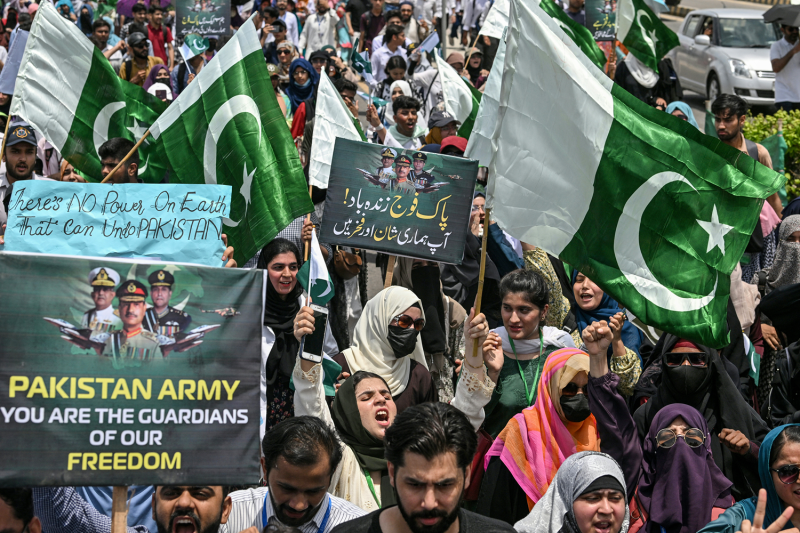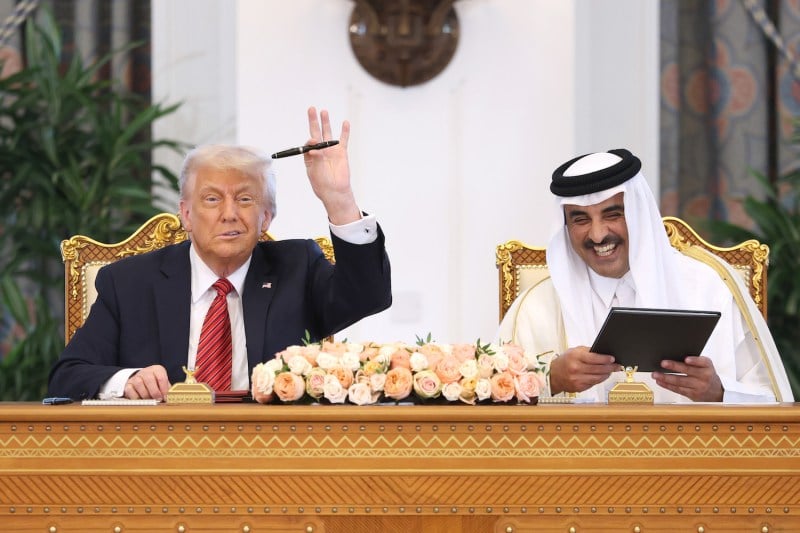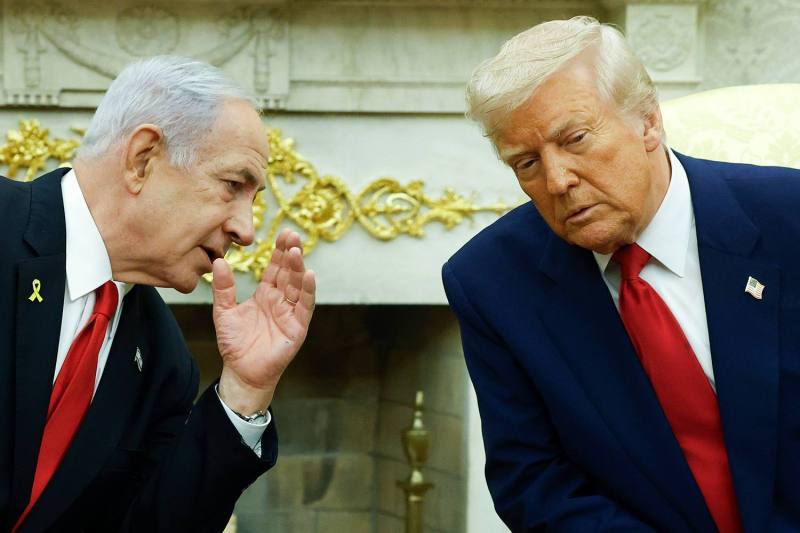Another Clash Over Kashmir Is Coming

Another Clash Over Kashmir Is Coming
Pakistan’s army needs conflict with India to justify its own existence.
Students and teachers from different universities hold Pakistani flags as they shout anti-India slogans during a rally to express their solidarity with the country’s armed forces, seen in Karachi, Pakistan, on May 15.
Asif Hassan/AFP via Getty Images
The dust has yet to settle on the most recent Pakistan-India crisis, but another one is already—and inevitably—around the corner within the next few years. The Pakistani Army, which rules the country, sees the conflict over Kashmir as existentially critical for the nation, regardless of material considerations. The latest conflict, meanwhile, has reinforced the assessment by the Pakistani leadership that asymmetric warfare works, however risky it may be.
Kashmir is a lodestone in the grand strategy of the Pakistani Army, and there is general consensus on this issue among the public. From Pakistan’s point of view, the partition of the subcontinent in 1947 was incomplete because the only Muslim-majority province in British India, Kashmir, did not become a part of Pakistan. Without Kashmir—the “K” in the country’s name, partially formed from an acronym of its component states—Pakistan itself is incomplete.
The dust has yet to settle on the most recent Pakistan-India crisis, but another one is already—and inevitably—around the corner within the next few years. The Pakistani Army, which rules the country, sees the conflict over Kashmir as existentially critical for the nation, regardless of material considerations. The latest conflict, meanwhile, has reinforced the assessment by the Pakistani leadership that asymmetric warfare works, however risky it may be.
Kashmir is a lodestone in the grand strategy of the Pakistani Army, and there is general consensus on this issue among the public. From Pakistan’s point of view, the partition of the subcontinent in 1947 was incomplete because the only Muslim-majority province in British India, Kashmir, did not become a part of Pakistan. Without Kashmir—the “K” in the country’s name, partially formed from an acronym of its component states—Pakistan itself is incomplete.
Pakistani leaders have promulgated this narrative since the state was created. Muhammad Ali Jinnah himself, Pakistan’s founder, emphasized the importance of Kashmir for Pakistan, describing it as the jugular vein of the country, a claim that is still repeated by military chiefs and prime ministers alike. There appears to be a wide consensus across Pakistan’s military, political elites, and ordinary Pakistanis alike that Kashmir belongs to Pakistan. The geographical dispensation is a source of ontological insecurity for the Pakistani state and its citizenry.
The conflict over Kashmir is also critical for the existence of the Pakistani military itself. Without a standing threat from India, the Pakistani Army would be unable to justify its size and dominant political role, with 654,000 active-duty personnel in addition to 500,000 paramilitary troops and another 550,000 reservists who can be mobilized when needed.
Pakistan’s military hegemonizes the state’s politics and policies, commandeering resources for itself and its myriad personnel while the state remains dependent upon regular International Monetary Fund (IMF) bailouts and other forms of international assistance. Ideologically and materially, the Pakistani Army needs this conflict with India to survive. As the adage goes, while most countries have armies, in Pakistan, the army has a country.
Third—and critically—the Pakistani Army cannot change maps in Kashmir by force. It cannot decisively defeat India in a short war—but nor can the much larger India decisively defeat Pakistan in a short war. The reason for this is that both sides are believed to be roughly equal along the international border and line of control, as well as the fact that long wars are obviated by the presence of nuclear weapons.
Even before nuclear weapons, though, the Pakistani Army has effectively relied upon nonstate actors. In 1947, Pakistan dispatched nonstate actors from its tribal areas, later rechristened mujahideen, to seize Kashmir despite having a standstill agreement with Kashmir’s sovereign, Maharaja Hari Singh.
As the marauders approached Kashmir’s largest city, Srinagar, leaving a trail of atrocities in their wake, Singh requested military assistance from Delhi. Delhi offered this assistance on the condition that Kashmir accede to India. On Oct. 26, 1947, Singh signed the instrument of accession. India began the airlift of troops to what was now Indian territory, and the first India-Pakistan war began. It would last from 1947 through the end of 1948.
The war ended on Jan. 1, 1949, with a United Nations-brokered cease-fire agreement that established a cease-fire line, under which Pakistan controlled about 30 percent of the contested territory and India controlled the remainder.
While some have argued that Pakistan’s adventurism with nonstate actors eventually led to the first conventional war that Pakistan failed to win, I have pointed out that from Pakistan’s point of view, it learned a valuable lesson: Namely, the gambit paid off. Had Pakistan been more cautious, it would have no portion of the prized state. Pakistan continued using sabotage and covert operations to destabilize the region throughout the following decades.
With Pakistan’s nuclear overhang emerging in the early 1980s, which is when Pakistan is believed to have developed a crude nuclear weapon, Pakistan became even more brazen in its use of nonstate actors in Kashmir—and after overt nuclearization in 1998, in India itself. The most outlandish Pakistani actions in the wake of dual nuclearization was the 1999 seizure of the Kargil Heights by the Northern Light Infantry, disguised as mujahideen, and the assault upon Mumbai carried out by jihadi militant group Lashkar-e-Taiba in November 2008.
While the Kargil conflict demonstrated that nuclear weapons can help limit a conflict should it break out, it also shows that nuclearization encouraged Pakistani adventurism. Since Kargil, Pakistan has sponsored numerous attacks in Indian-administered Kashmir and even provocative attacks such as the aforementioned multiday siege of Mumbai in 2008.
Pakistan engages in these subconventional activities for a simple reason: These gambits pay off. To understand this calculus, it is useful to view the Pakistani Army as an insurgent organization, at least in its positioning with India. An insurgent organization rarely wins a conventional fight—yet it is very difficult to defeat. After all, an insurgent force merely has to demonstrate that it has not been fully defeated, which it does by conducting episodic attacks against the foe.
In the same way, Pakistan’s insurgent army demonstrates that it has not been compelled by India by conducting episodic attacks in Kashmir or elsewhere in India. India—no matter how extensive its counterinsurgency grid in Kashmir may be—cannot preempt every single attack. It is simply impossible.
Equally important is the fact that these attacks service another goal of the Pakistani Army. They belie the Indian claim that Kashmir is pacified. With each of these attacks, the Indian government ramps up its security measures in the valley, making ordinary Kashmiris’ lives more difficult. This, too, bolsters the Pakistani Army’s narrative that India is an oppressive force, occupying Kashmiris who yearn to be free from the shackles of the Indian state.
This puts India in a challenging position. In 2016, after a Jaish-e-Mohammad terrorist attack at an Indian army camp at Uri, India launched hot pursuit operations against terrorist targets in Pakistan-administered Kashmir. In 2019, following the same militia’s bloody suicide attack on Central Reserve Police Force personnel at Pulwama, India used Israeli weapons to bomb targets associated with Jaish-e-Mohammad in Pakistan’s Khyber Pakhtunkhwa province.
In response to the attack at Pahalgam that spurred the most recent outbreak of the conflict, India had to up its own ante. It did so by launching “Operation Sindoor,” which targeted some nine sites associated with Lashkar-e-Taiba and Jaish-e-Mohammad. Two of those targets were in Pakistan’s heartland of the Punjab. The Pakistani Army was compelled to respond with verve.
With each episode, the escalation cycle has become more perilous because both India and Pakistan continue to engage in defense modernization, and each concludes from each episode that it has deterred the other. Each episode has left the international community scrambling to help the two combatants find off-ramps.
If Operation Sindoor was a new strategy of escalation, it also imposed a new level of risk. And at the end of the day, what gains did India make? In terms of domestic politics, Prime Minister Narendra Modi was able to once again burnish his strongman credentials. But all of the targets hit can be rebuilt or replaced. None of the destruction degrades the ability of these terrorist groups to operate, nor does it alter Pakistan’s fundamental calculus.
Unfortunately, the international community has never seriously considered undertaking a punitive regime to coerce Pakistan’s military to cease and desist from using terrorism as a tool of foreign policy. Yes, countries and international organizations have designated the jihadi groups and their key operatives as terrorists, which is a nuisance both to the groups and the Pakistani Army that uses them. But this does little to change Pakistan’s behavior.
The international community could not even put Pakistan on the Financial Action Task Force blacklist. (The blacklist, officially known as the “High-Risk Jurisdictions Subject to a Call for Action,” is a list that identifies countries that exhibit serious deficiencies in their efforts to combat money-laundering, terrorist financing, and proliferation financing.) Putting Pakistan on that blacklist is too risky for the international community because once on that list, the country would be denied access to IMF assistance. Instead, Pakistan languished on the gray list until it was absurdly removed in October 2022.
Pakistan uses its nuclear arsenal to effectively blackmail the international community, which is too afraid to act against Islamabad because it is afraid that the country will fail. Unless the threat posed by Pakistan’s use of terror and instability is addressed, Pakistan’s behavior won’t change—and another outrage will follow.
C. Christine Fair is a professor at Georgetown University’s security studies program within the Edmund A. Walsh School of Foreign Service. She is the author of Fighting to the End: The Pakistan Army’s Way of War and In Their Own Words: Understanding Lashkar-e-Tayyaba.
More from Foreign Policy
-

Indian Air Force personnel stand in front of a Rafale fighter jet during a military aviation exhibition at the Yelahanka Air Force Station in Bengaluru. A Tale of Four Fighter Jets
The aircraft India and Pakistan use to strike each other tell a story of key geopolitical shifts.
-

A cardinal in a black robe with red sash with hands folded in front of him walks past a stage and steps. Conclave Sends Message With American Pope
Some cardinals had been agitating for U.S. leadership to counter Trump.
-

An illustration shows red tape lines crossing over and entrapping a semiconductor chip. Is It Too Late to Slow China’s AI Development?
The U.S. has been trying to keep its technological lead through export restrictions, but China is closing the gap.
-

A man watches a news program about Chinese military drills surrounding Taiwan, on a giant screen outside a shopping mall in Beijing on Oct. 14, 2024. The Pentagon Fixates on War Over Taiwan
While U.S. military leaders fret about China, Trump has dismissed the Asia-Pacific.










Join the Conversation
Commenting on this and other recent articles is just one benefit of a Foreign Policy subscription.
Already a subscriber?
.
Subscribe
Subscribe
View Comments
Join the Conversation
Join the conversation on this and other recent Foreign Policy articles when you subscribe now.
Subscribe
Subscribe
Not your account?
View Comments
Join the Conversation
Please follow our comment guidelines, stay on topic, and be civil, courteous, and respectful of others’ beliefs.
Change your username |
Log out
Change your username:
CANCEL
Confirm your username to get started.
The default username below has been generated using the first name and last initial on your FP subscriber account. Usernames may be updated at any time and must not contain inappropriate or offensive language.